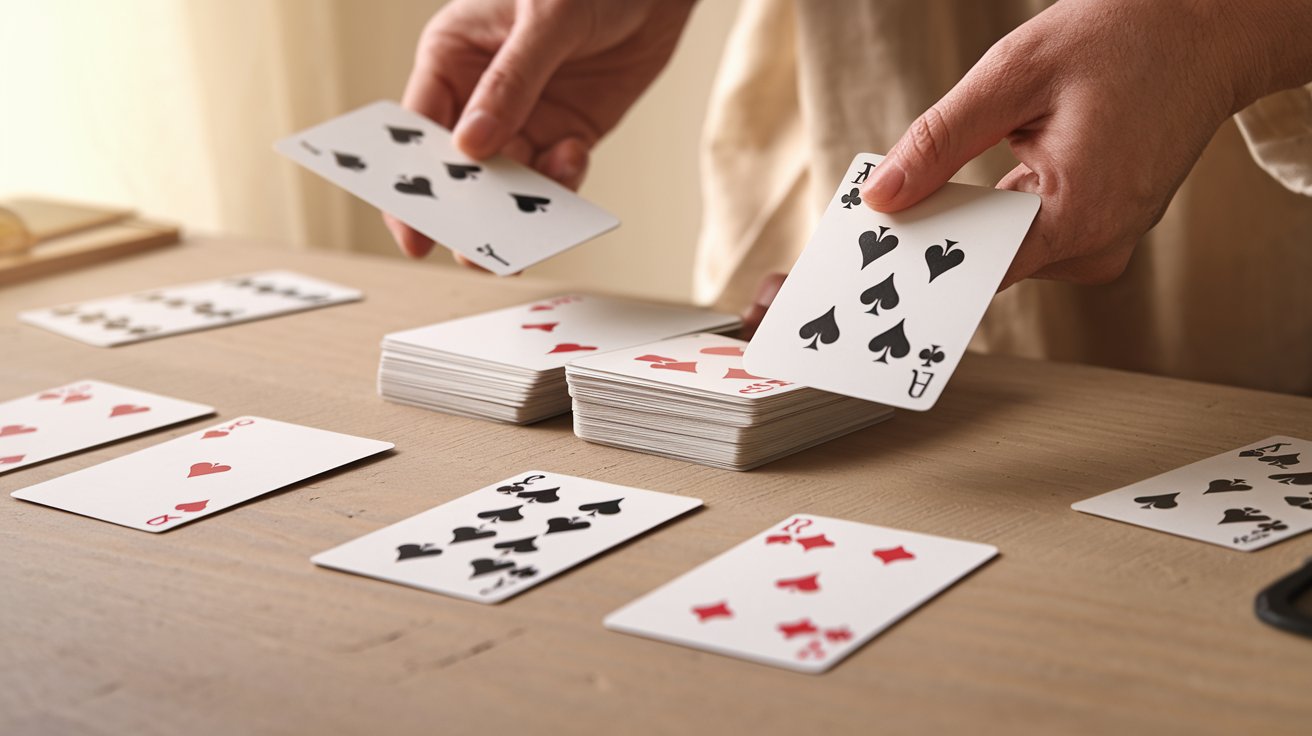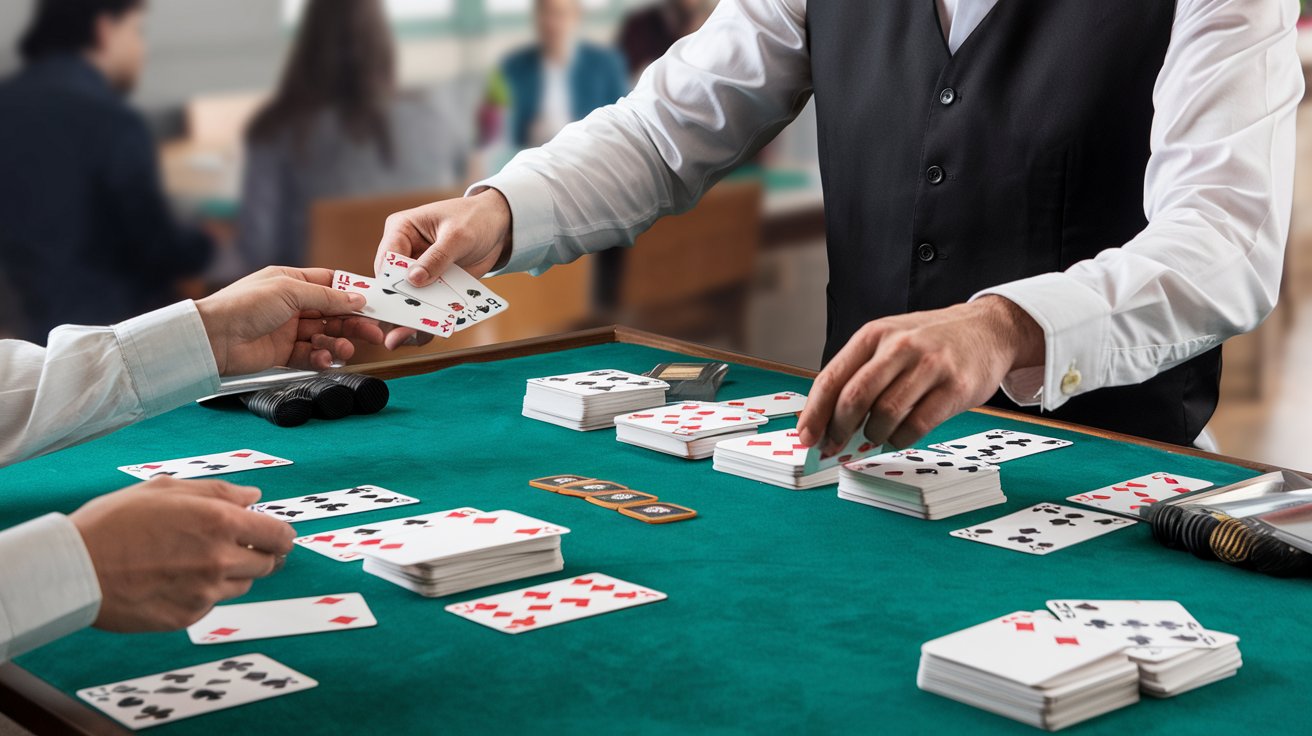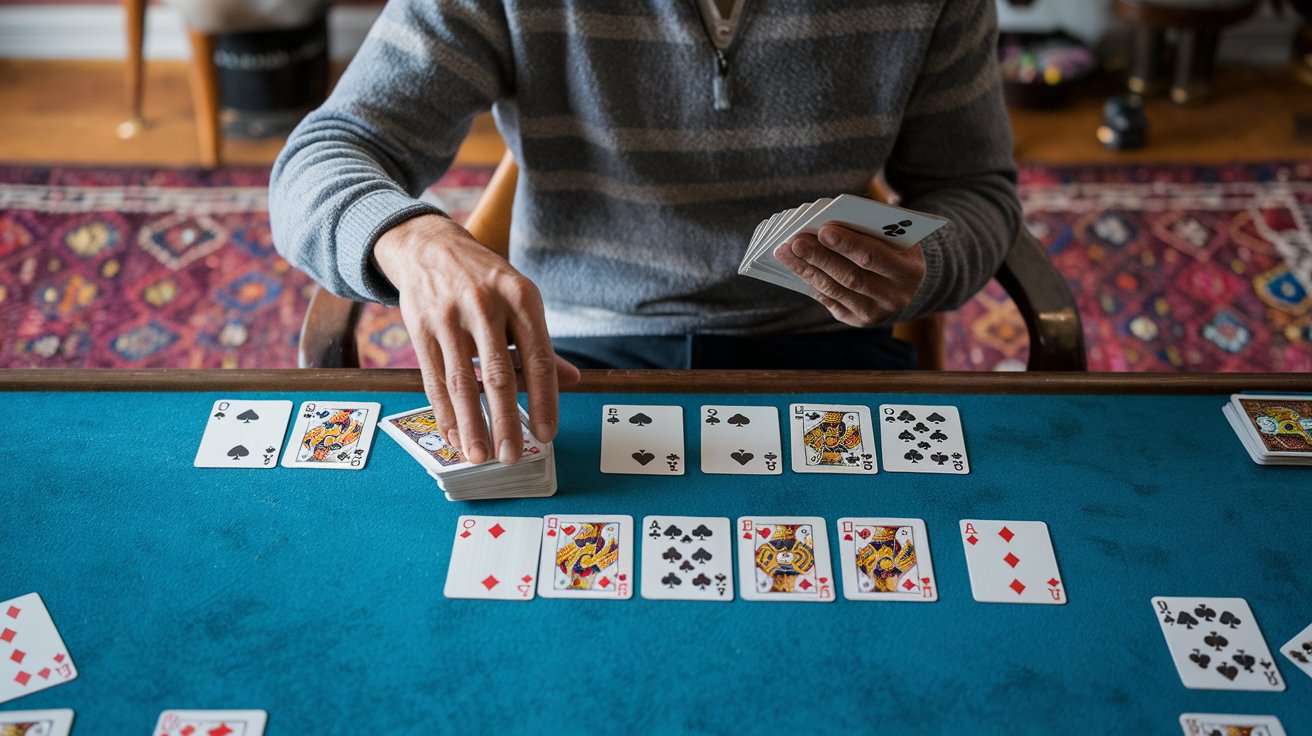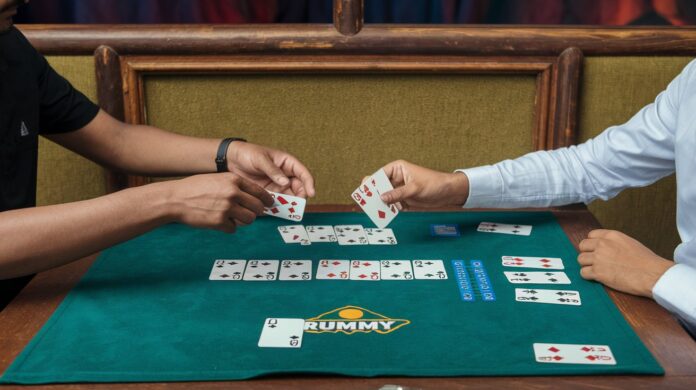Whether you’re gathering friends for a casual game night or looking to sharpen your skills for more competitive play, knowing how to properly deal cards in Rummy is an essential skill that can make your gaming experience smoother and more enjoyable. This comprehensive guide will walk you through everything you need to know about dealing cards in various Rummy variations, from basic techniques to professional tips that will impress your fellow players.
Understanding the Basics of Rummy Card Dealing

Rummy is a family of card games that share a common objective: forming sets and runs by drawing and discarding cards. Before diving into the dealing process, it’s important to understand that proper dealing ensures fair play and prevents any accusations of cheating or bias.
The Equipment You’ll Need
To deal cards for a Rummy game, you’ll need:
- A standard deck of 52 playing cards (jokers optional, depending on the variation)
- A flat, clean playing surface
- 2-6 players (the ideal number varies by Rummy variant)
- Card shuffling skills (which we’ll cover shortly)
Common Rummy Variations and Their Dealing Requirements

Different Rummy variations require different dealing approaches:
- Basic Rummy: 7-10 cards per player (typically 7 for 3-4 players, 10 for 2 players)
- Gin Rummy: 10 cards per player
- Oklahoma Rummy: 7 cards per player
- Rummy 500: 7-13 cards depending on the number of players
- Canasta: 11 cards per player
- Indian Rummy: 13 cards per player
For this guide, we’ll focus primarily on Basic Rummy dealing techniques, though most principles apply across variations.
Step-by-Step Guide to Dealing Cards in Rummy

Step 1: Preparing the Deck
Before dealing, proper preparation of the deck is crucial:
- Unwrap new cards carefully – New decks often come with cellophane wrapping. Remove this gently to avoid damaging the cards.
- Check the deck – Ensure all 52 cards are present and none are damaged or marked.
- Remove jokers or add them – Depending on your Rummy variation, you may need to remove jokers or include them as wildcards.
Step 2: Shuffling Techniques for Rummy
A thorough shuffle ensures randomness and fairness. Here are three effective methods:
The Overhand Shuffle
- Hold the deck in one hand
- With your other hand, pull small batches of cards from the top
- Place these batches into your first hand, slowly building a new stack
- Repeat this process 5-7 times for proper randomization
The Riffle Shuffle (Also Called the Bridge)
- Split the deck into two equal halves
- Hold one half in each hand with thumbs on the inside edges
- Bend the cards slightly and release them so they interweave
- Push the cards together to complete the shuffle
- Repeat 3-5 times for thorough mixing
The Hindu Shuffle
- Hold the deck in one hand
- With your other hand, pull small packets of cards from the middle of the deck
- Place these packets on top of the remaining cards
- Continue until all cards have been rearranged
- Repeat 3-5 times
For maximum randomization, combine different shuffling techniques before dealing.
Step 3: Cutting the Deck
After shuffling, the deck should be cut:
- Place the shuffled deck on the table
- Ask the player to your right to cut the deck
- They should lift a portion of the deck and place it beside the remaining portion
- You then place the bottom portion on top of the cut portion
- This tradition helps ensure fair play and randomization
Some players believe the cut should be made with the left hand for good luck, though this is purely superstition.
Step 4: Determining the First Dealer
In casual games, you might simply decide who deals first, but traditional methods include:
- High card draw – Each player draws a card, and the highest card deals first
- Ace for dealer – Deal cards face up until an ace appears; that player deals first
- Birthday method – The player with the nearest upcoming birthday deals first
For subsequent games, the deal typically passes clockwise.
Step 5: The Dealing Process
Now for the main event—dealing the cards:
- Hold the deck in your dominant hand
- Begin with the player to your left (clockwise dealing is standard)
- Deal one card at a time, face-down to each player
- Continue around the circle until each player has the required number of cards:
- 7 cards per player in basic Rummy with 3-4 players
- 10 cards per player in basic Rummy with 2 players
- Adjust according to your chosen variation
- Place the remaining cards face-down in the center to form the stock pile
- Turn the top card of the stock pile face-up beside it to start the discard pile
Step 6: Handling Special Dealing Situations
Dealing with Exposed Cards
If a card is accidentally exposed during dealing:
- If it’s the very first card dealt, reshuffle and start over
- If it happens during the deal, continue dealing as normal
- If multiple cards are exposed, it’s best to reshuffle and restart
Dealing for Large Groups
When playing with 5-6 players:
- Consider using two decks shuffled together
- Reduce the number of cards dealt to each player (often to 6 or 7)
- Deal more quickly to maintain game momentum
Professional Dealing Techniques for Rummy Enthusiasts
Once you’ve mastered the basics, consider these advanced techniques:
Speed Dealing
With practice, you can develop a rhythmic, efficient dealing style:
- Hold the deck in a comfortable “mechanic’s grip” with your thumb on one side and fingers on the other
- Use your thumb to slide cards off the top in a smooth motion
- Develop a consistent cadence to your dealing
- Practice until you can deal a complete hand in under 15 seconds
Dealing from a Shoe
For multi-deck Rummy games or to prevent dealing irregularities:
- Use a card shoe (a device that holds multiple decks)
- Draw cards from the shoe rather than holding the deck
- This eliminates concerns about bottom-dealing or other manipulations
- It’s especially helpful for games like Canasta that use multiple decks
One-Handed Dealing
This flashy technique is sure to impress:
- Hold the deck in your palm with your thumb on one side
- Use your fingers to peel cards off the top
- With practice, you can deal entirely with one hand
- This takes considerable practice but adds flair to your game night
Common Dealing Mistakes and How to Avoid Them
Miscount Errors
One of the most common mistakes is dealing the wrong number of cards:
- Count aloud as you deal if necessary
- Develop a rhythm to keep track
- If you realize you’ve made a mistake, collect all cards and redeal
Inconsistent Dealing
Dealing cards with varying force or at different angles can give information about the cards:
- Practice dealing with consistent pressure and angle
- Deal all cards from the same position
- Maintain the same rhythm throughout
Exposed Card Information
Be careful not to expose card faces or react to cards you see:
- Keep the deck angled away from your view
- Maintain a poker face even if you glimpse a card
- Deal directly from the top without looking at the cards
Dealing Etiquette in Rummy Games
Respect Traditional Order
- Deal clockwise unless specifically playing a variation that deals counterclockwise
- Allow for the traditional cut before dealing
- Honor house rules about dealing procedures
Handle Cards with Care
- Don’t bend or mark cards while dealing
- Deal on a clean, flat surface to prevent damage
- Handle cards gently to extend their lifespan
Be Attentive During the Deal
- Avoid distractions while dealing
- Don’t engage in conversation that might disrupt your count
- Focus on fair distribution of cards
Digital Rummy: Dealing in Online Games
The popularity of online Rummy has exploded in recent years. While the computer handles the dealing, understanding the process helps:
- Digital shuffling uses random number generators for true randomization
- Cards are dealt instantly rather than one by one
- The system prevents misdeals and exposed cards
- Some platforms allow you to watch the dealing animation for satisfaction
The advantages of digital dealing include perfect shuffles, no physical limitations, and elimination of human error.
Teaching Others to Deal Rummy Cards
Passing on dealing skills is part of the Rummy tradition:
- Start with basic overhand shuffling before teaching more complex methods
- Demonstrate slowly, then have the learner practice
- Emphasize the importance of fairness and randomization
- Be patient with beginners who may drop cards or lose count
Conclusion: Mastering the Art of the Deal
Proper card dealing in Rummy may seem like a minor detail, but it significantly impacts game flow and integrity. With the techniques outlined in this guide, you’ll be able to deal cards efficiently, fairly, and perhaps even with a bit of style that impresses your fellow players.
Remember that practice makes perfect. The more you shuffle and deal, the more natural and efficient the process will become. Soon, you’ll be dealing cards with the confidence and speed of a casino professional, setting the stage for countless enjoyable Rummy games with friends and family.
So shuffle up, cut the deck, and deal those cards—your Rummy adventure awaits!

Zareb Saleh is a journalist at Gulf Today and a ghostwriter for Gameoholic, specializing in gaming, technology, and digital culture. With a keen eye for industry trends, he delivers insightful stories that engage and inform readers.




